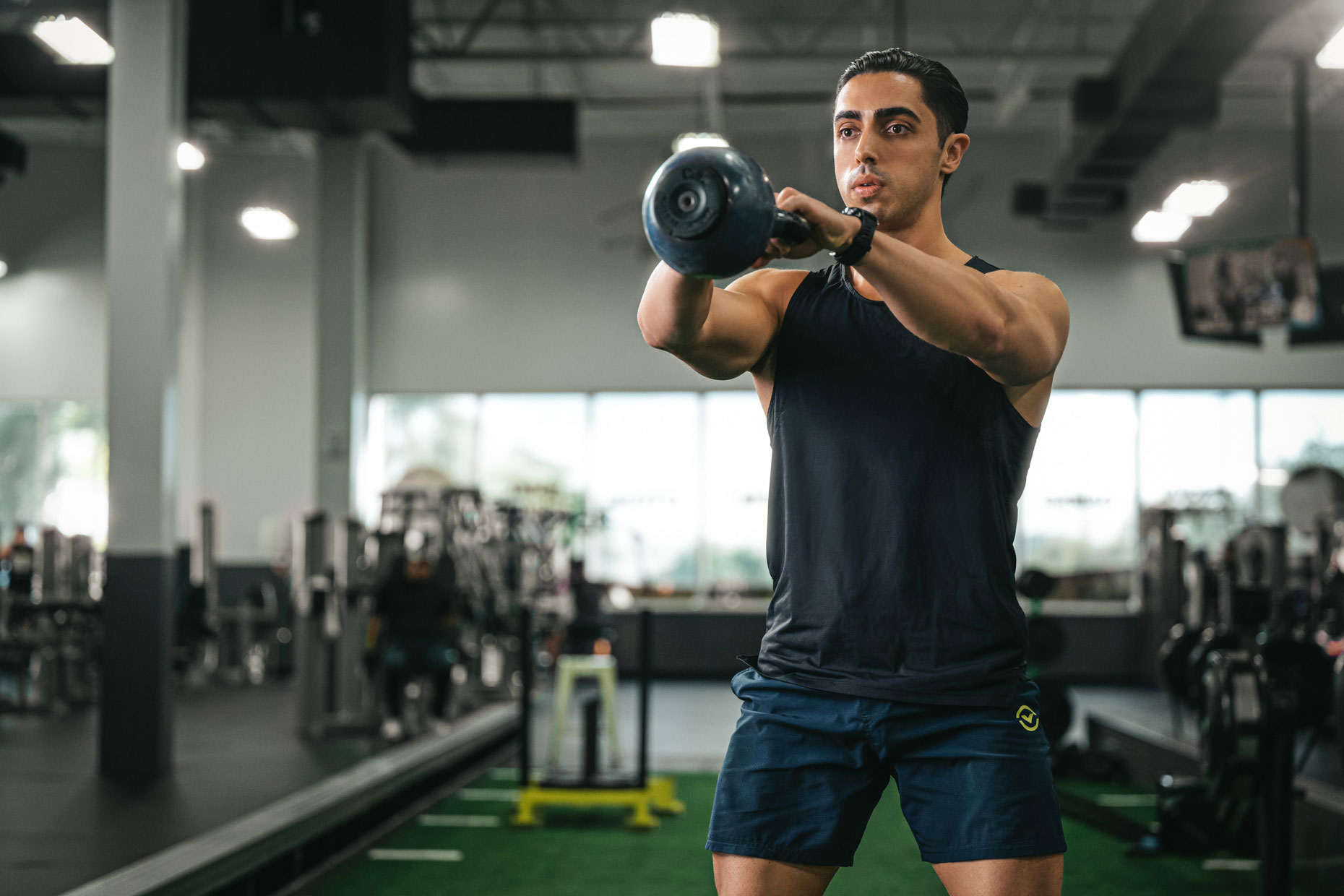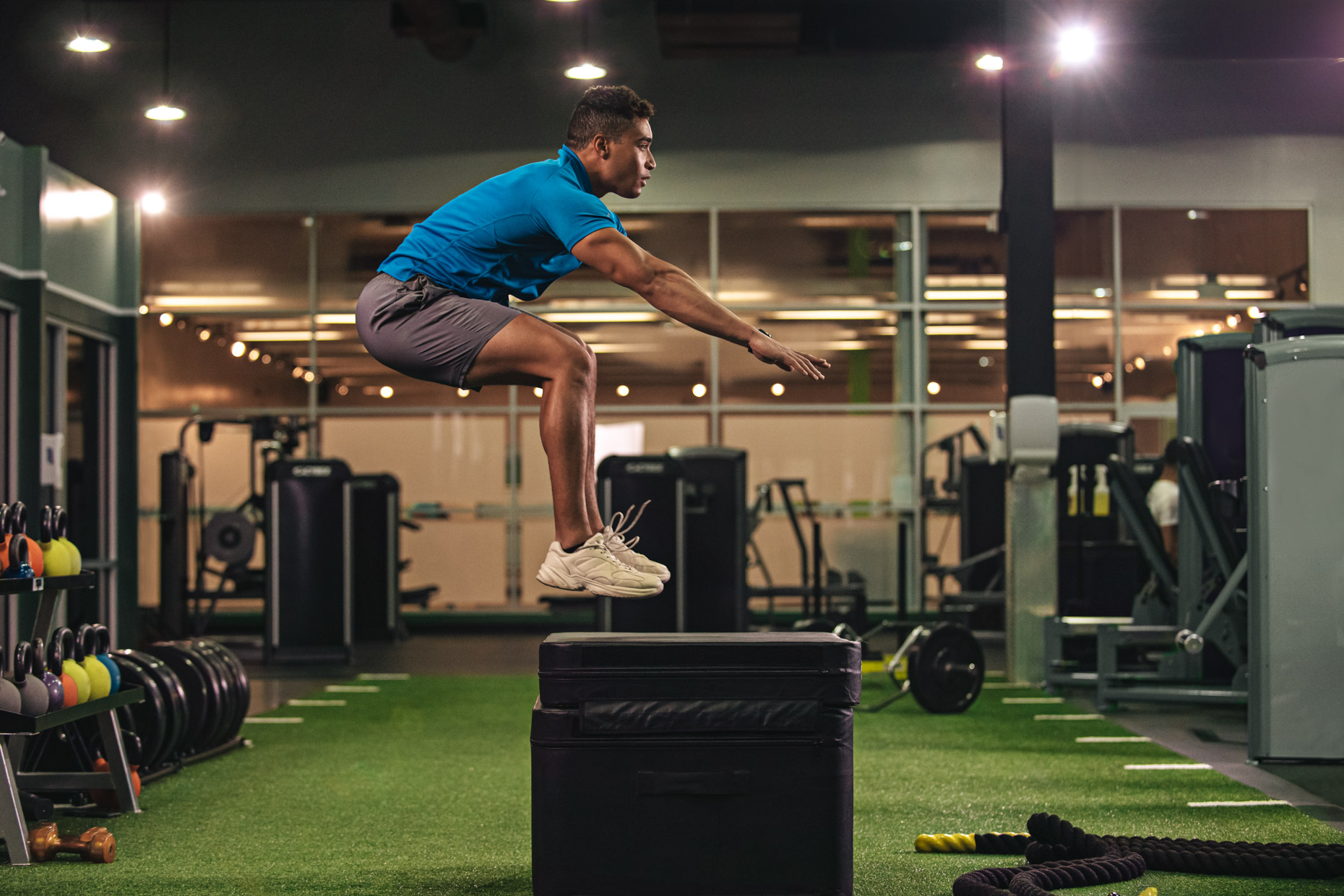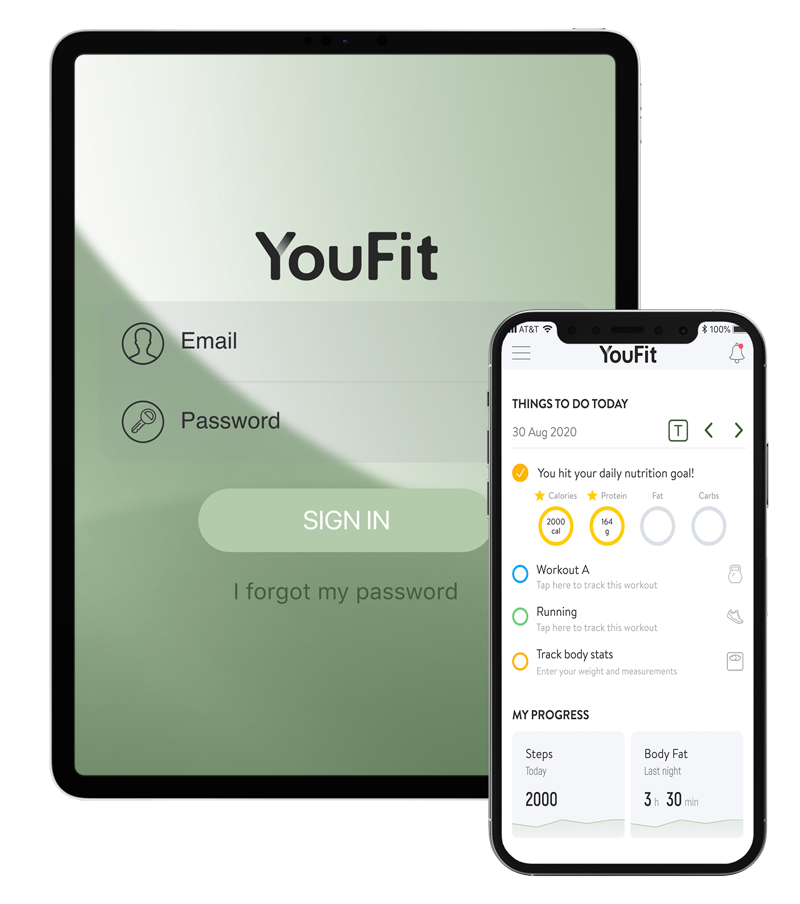Kettlebell Training by Personal Trainer Stephen Sheehan
Walk into any YouFit Gyms location and you’re bound to see members using barbells and dumbbells to achieve their fitness goals. While I’m a big fan of both, even I have to admit no training program would be complete without an often-overlooked and vastly under-appreciated tool: the kettlebell.
Although it may look a little odd, this piece of gym equipment is the ultimate Swiss Army knife. Effective for everything from metabolic conditioning to power development to hypertrophy, working with kettlebells will challenge your body and mind to learn new movements and increase your overall fitness.
But how exactly can you get the most bang for your kettlebell buck? From the classic swing to a squat variation that’ll put your quads, hamstrings, and core to the test, here are seven kettlebell-based exercises you should incorporate into your weekly workout routine!
1. Kettlebell Training: Goblet Squats
Both beginners and experts can benefit from the good ole’ goblet squat. A staple of any kettlebell training program, it works your glutes, quads, hamstrings, and core. Plus, growing comfortable with this functional movement will help make everyday tasks like picking up bags or boxes from the floor easier.
To properly execute a goblet squat, stand with your feet slightly wider than hip-width apart with your toes slightly turned out. Hold the kettlebell in both hands at chest level, engage your core, keep your chest upright, and lower your weight until you reach parallel.
Finish the movement by driving through your heels and squeezing your glutes at the top. Start with three sets of 10-12 reps with a medium weight before you increase the intensity.
Trainer Tip: Make this lower-body kettlebell exercise even more challenging by pausing for 2-3 seconds at the bottom of each rep.
2. Kettlebell Training: Swings
A full-body exercise that can be performed in a number of progressively challenging variations, the kettlebell swing is great for building a strong posterior chain. This dynamic hip-hinge movement requires you to engage your glutes, hamstrings, and core from start to finish. And while you may be tempted to take a 16KG kettlebell from the rack, your best bet is to master the technique using a manageable weight.
Stand with your feet slightly wider than shoulder-width, bend your knees, and grab the kettlebell with both hands. While maintaining a flat back, drive your hips back and swing the weight up using a thrust motion. Keep that momentum going for anywhere from 30-60 seconds, take a brief rest, and repeat.
3. Kettlebell Training: Clean and Press
Pull a page from the powerlifting playbook with the kettlebell version of a clean and press. This multi-faceted movement tests not only your grip strength and core stability, but also your coordination.
For a two-handed clean and press, stand with your feet approximately shoulder-width apart and your knees slightly bent. With kettlebells in both hands, explode off the ground, driving your hips forward as you pull the kettlebells into a front rack position. Finish the movement by squeezing the handle, bracing your core, engaging your glutes, and extending your arm before you safely return to the starting position.
4. Kettlebell Training: Sumo High Pull
A total-body exercise that targets the lats, traps, core, and virtually all your leg muscles, be prepared to feel a burn in your shoulders and thighs as you push and pull your way through each rep. The sumo high pull is another terrific exercise for building posterior chain strength, especially since it can help reinforce good posture for other lifts.
Get in position by standing with your legs wider than shoulder-width and your toes slightly pointed out. Next, lower yourself until your knees form a 90-degree angle and both hands reach the kettlebell positioned between your legs. Then, extend your legs, keep your shoulders back, and pull the kettlebell up until the handle is level with your chin.
Trainer Tip: Concentrate on contracting your traps at the top of the movement for 2-3 seconds. More time under tension = more gains.
5. Kettlebell Training: Renegade Row
Take planking to the next level by incorporating kettlebells. Rather than staying stationary, you can build a strong core and back by making the movement more dynamic via the renegade row. For best results, choose a light weight, as this full-body exercise requires balance and coordination to perform correctly.
The first step is to get in a high plank position with your hands grasping onto kettlebell handles. Then, as you keep your body in a straight line and brace your core, perform a row one arm at a time. Again, make sure to squeeze at the top of the movement to get the most muscle-building bang for your buck.
6. Kettlebell Training: Snatch
Talk about a taxing exercise that takes time to fully get the hang of. But if you put the effort into getting the technique down, you’ll reap the calorie-burning and strength-building rewards of the kettlebell snatch.
For the single-arm version, hold a kettlebell in one hand between your legs as you squat down until your thighs reach parallel. Utilizing a similar technique as the swing, drive through your hips and powerfully thrust the kettlebell to shoulder height. Make sure to rotate your hand as you lock out your arm. Bring the kettlebell back to the starting position and repeat, making sure to perform the movement on both sides.
Trainer Tip: Don’t neglect your shoulder health when it comes to the snatch. Having mobile and stable shoulder joints will allow you to pull off this kettlebell exercise efficiently–and pain-free.
7. Kettlebell Training: Farmer’s Walk
Finish your workout by emptying the tank with a fantastic conditioning exercise that’s also super functional. Besides preparing you to carry groceries with relative ease, the farmer’s walk is great for building a strong grip, a more muscular upper back, and a more efficient cardiorepiratory system.
Best of all? It’s arguably the easiest kettlebell exercise you can do from a technique standpoint. Simply hold two kettlebells by your side, maintain a tall, upright posture, and walk as quickly as possible to your end point and back. Make things more difficult by going heavier, increasing the amount of time or distance, or reducing your rest periods.










